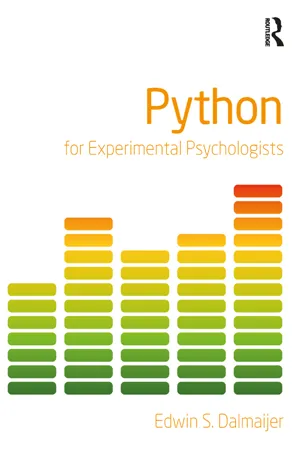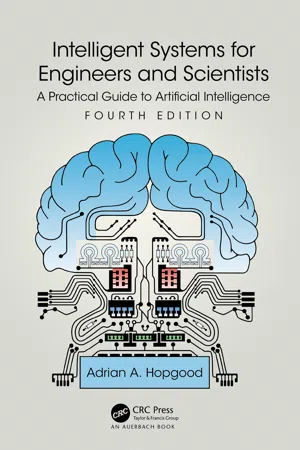Python
Python is a high-level, interpreted programming language known for its simplicity and readability. It is widely used for web development, data analysis, artificial intelligence, and scientific computing. Python's extensive standard library and large community make it a popular choice for beginners and experienced programmers alike.
3 Key excerpts on "Python"
- eBook - ePub
Bioinformatics Algorithms
Design and Implementation in Python
- Miguel Rocha, Pedro G. Ferreira(Authors)
- 2018(Publication Date)
- Academic Press(Publisher)
...Finally, we will cover the paradigm of object-oriented programming and its implementation in Python using classes and methods, also browsing through some of the main pre-defined classes and their methods. 2.1 Features of the Python Language Python is an interpreted language that can be run both in script or in interactive mode. It was created in the early 1990s by Guido van Rossum [149], while working at Centrum Wiskunde & Informatica in Amsterdam. Python has two main versions still in use by the community: 2.x (where the last release was 2.7 in 2010) and 3.x, where new releases have been coming out gradually (last at the time of writing was 3.6 in the end of 2016). In this book, we will use Python 3.x, since it is the most recent and eliminates some quirks of the previous Python 2.x releases, being also the predictable future of the language. Due to some compatibility issues, a number of programmers still use the previous 2.x versions, but this scenario is rapidly changing. Most of the examples in this book will still work in Python 2 and the reader should not face difficulties in switching to that version if that is a requirement for some reason. As its creator puts it, Python is “a high-level scripting language that allows for interactivity”. It combines features from different programming paradigms including imperative, scripting, object-oriented, and functional languages. We emphasize the following features of the language: • Concise and clear syntax. The syntax not only improves code readability, but also allows an easy-to-write code that increases programming productivity. • Code indentation. Opposed to other languages that typically use explicit markers, such as begin-end blocks or curly braces to define the structure of the program, Python only uses the colon symbol “:” and indentation to define blocks of code...
- eBook - ePub
- Edwin Dalmaijer(Author)
- 2016(Publication Date)
- Routledge(Publisher)
...1 Python Python is a programming language. Not just any programming language: it’s currently one of the most popular in the world. Whichever type of ranking you use, Python usually ends up in or just under the top five. It even seems to be the most discussed language on Reddit’s programming forum (www.reddit.com/r/programming/). Why is this important? There are two main reasons why you should care. The first is that a more popular language has a larger user base. If you run into an issue, there is a better chance that someone else has run into the same problem, and they might have already solved it. Almost the best thing about the internet is that it’s full of programming resources. Simply search for your problem (or error message) and you are very likely to find the solution on Stack Overflow (http://stackoverflow.com) or a similar programming forum. The second reason you should care about how widespread your programming language is, is that it could inform you how beneficial it is to learn it. If you learn a very obscure language, such as E-basic (from E-Prime) or PCL (from Presentation), you will be perfectly able to do most of what you want in your academic research. However, you might find it hard to find any other employers that will be interested in your obscure skill. If you care about your CV, it would be better to learn a language that other labs or companies are familiar with. For example, in academia you will have better chances of being hired if you know Matlab or Python. Outside academia, more web-oriented languages are usually preferred, such as Java, PHP, and Python. Therefore, knowing Python could be good for your career. One of the reasons Python is so popular is that it is very versatile. You can use it to make computer games, do PC-to-PC communication, or to run websites...
- eBook - ePub
Intelligent Systems for Engineers and Scientists
A Practical Guide to Artificial Intelligence
- Adrian A. Hopgood(Author)
- 2021(Publication Date)
- CRC Press(Publisher)
...Although it is not a functional language like Lisp, it does nevertheless permit the functional style of programming. That is to say that Python functions can be defined, which always return a value, even if that value is None. Likewise, in practical terms, Python is an object-oriented programming language. It doesn’t strictly meet the requirements of object-orientation listed in Section 4.6.1, as encapsulation is not enforced. So, information in class members is visible unless steps are taken to hide it. In that respect, it is equivalent to C++ in providing access controls (Section 4.6.5). In Python, protected and private member classes are designated with names that begin with a single or double underscore, respectively. In practice, anything that can be done in C++ can be done in Python. A great strength of Python is its huge user base who share libraries of code through open-source communities. This wealth of resources has been boosted further through software offered by large corporations. 11.5.2 A Worked Example The syntax and semantics of Python can be illustrated by programming the same example that we used with Lisp and Prolog, that is, selecting from a database those polymers that meet a set of specifications, as defined in Box 11.1. As before, the first task will be to create the materials database, based on a list of polymer names with their corresponding types and a selection of physical properties. In Python, a list is a collection of data instances, of any type, separated by commas. The names of the polymers and their properties need to be treated as text strings, denoted by quotes. Without the quotes, the names would be interpreted as the names of variables. Apart from these syntactical differences, the structure of lists in Python is similar to those in Lisp...


